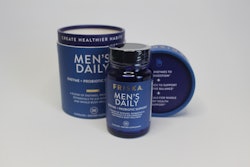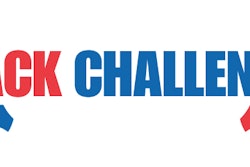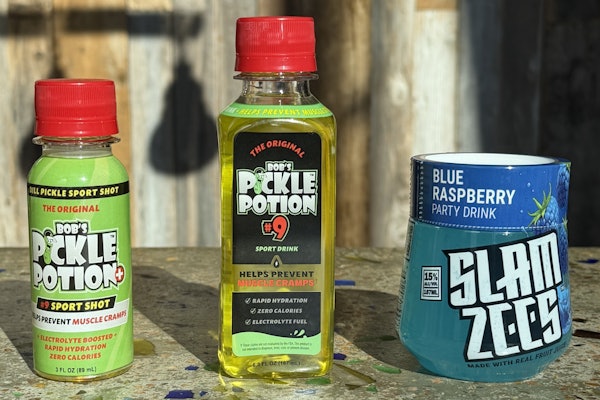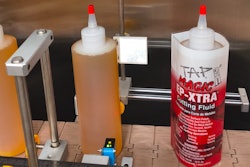Not only does PMMI’s OpX Leadership Network bring together CPGs and OEMs to develop best practices and protocols for free industry adoption, but it also serves as a resource for tackling more significant industry issues. This unPACKed with PMMI episode revisits women in manufacturing with Lisa Rathburn, VP of engineering at T. Marzetti Company and active member of OpX Leadership Network and the Packaging & Processing Women’s Leadership Network. Hear Rathburn provide success stories, inspiration, and tips that will help and encourage women currently in the industry and offer guidance for young women looking to manufacturing as a career.
To subscribe, rate, review, and find more unPACKED podcast episodes, visit pmmi.org/podcast or find us on Apple Podcasts, Spotify, or iHeart Radio.
 | Read the full transcript below |
Sean Riley:
So, with all the fancy introductions out of the way, welcome to the podcast, Lisa.
Lisa Rathburn:
Thank you, Sean. It's a pleasure to be here.
Sean Riley:
So, you are the VP of engineering at T. Marzetti Company, but you're also pretty active at OpX. And we want to talk about some of the OpX Leadership Network... Some of the tools that you guys use and some of the tools that are available. So, I guess a quick way to kind of jump in is: OpX has this strong suite of tools and best practices that are out there for use in the industry, what new areas are being worked on by the network?
Lisa Rathburn:
Yes. We have three new work products that are underway this year to add to our suite of materials. And we really reached out to see what were the challenges that were common across the industry that had some white space for us to go after. And one of those was with respect to Industry 4.0 and an IoT roadmap. Another very critical with the labor market is the way it is with the onboarding and retention of critical staff within manufacturing. And then the last one is a focus on women in manufacturing and providing a tool and resources that would be inspiring to women in the industry.
Sean Riley:
Very interesting, because I know having had some of these podcasts with other members of OpX that you guys have touched on TCO, Total Cost of Ownership and things like that. And it seems that now we're getting more... I don't want to say that was the low-hanging fruit, but that was kind of more technical things. And now we're getting into more issues and things that are affecting the industry, which in my opinion includes Industry 4.0 and kind of IoT as it's become the norm versus something that people are just using here and there. So, I guess what is the concept behind the Industry 4.0 Roadmap?
Lisa Rathburn:
You're absolutely right. All of these tools touch on people, processes, and projects, and with the current market and the challenges that we're all having, what we're seeing is definitely need some tools to help a lot more on the people side and business process side. And so, one of the things that we're finding is that companies have a hard time understanding where to start with Industry 4.0. And so, this tool is to help them identify those critical first steps to implementing movement in that direction to digitize their manufacturing network. There are common elements that need to be addressed by anyone, regardless of how far they take this and where they go with it. And that's the intent of the document, just to give people a starting point.
Sean Riley:
I'm not as well versed in this as I should be, but you hear a term like Industry 4.0, the industrial internet of things and I hear it, my head wants to blow up and I just want to quit. So, I can imagine if you're viewing that from a company standpoint and you haven't implemented that, you need a guide or something to help with, "Hey, this is how you can jump into this," versus just being overwhelmed by the terminology, so that sounds like a great idea. Now, the thing that really caught my eye was looking at onboarding and retention. And as we've had this, what they're calling the Great Resignation, and we are having such a hard time in manufacturing and packaging and processing in particular with keeping people in the workforce or finding people. So this one really, to me, is interesting. And I'm trying to figure out how you guys are going about this. So, I'm curious for your answer on, in terms of onboarding and retention, who are the critical staff that you guys are addressing that you're looking to make sure are onboarded and retained?
Lisa Rathburn:
Yeah, the biggest issue that we hear from our members is that there's a lack of resources available to that manufacturing space. And a lot of feedback has come around technical resources, such as engineers and technicians, but that's not it, manufacturing's also struggling with operational resources, with operators, quality assurance professionals, supervisors on the floor and so forth. And so, this guideline is to prepare both operations personnel and HR personnel on how to find some best practices to find, onboard and retain quality employees that fill these positions.
Sean Riley:
Interesting. So, we're talking about the people actually on the plant floors, that's what we're targeting with trying to make sure that we have enough of these people to actually run the machinery and the manufacturing operations.
Lisa Rathburn:
Exactly, exactly. There seems to be a lot of turnover in these areas, a lot of competition where we're fighting for the talent just across the industries overall. And so, the goal is to help us learn what's important to the new generations that are coming in, what's changing over time, how do we make manufacturing attractive and a place where people want to be? And with things like new technology and automation and digitalization, we're trying to also leverage ways to, when we say attract new talent, make it more well-known that manufacturing is essentially a pretty fun space to work in, and that it is high-tech and that it is a place to learn and grow and problem solve and be a place that provides goods and services that consumers use. So, at all of our CPG companies, our products are on the shelf. And when people start to understand more about how this is made, we want to make that exciting for them, so that they, as consumers, also want to be a part of how it's made.
Sean Riley:
Very interesting, because I can understand from a manufacturing perspective, A. It has this reputation of being this dark dirty plant that you saw in black and white films when that's not the case at all, obviously. And it's also causing these things that you've spoken about, which is a great way of putting it, is keeping them more invested in what they're doing, because just like you said, they're seeing these real results on store shelves. So, now that we're talking onboarding and retention and the Great Resignation too, things that you could kind of also tie in as societal type changes and societal issues, another one is, and it's become bigger at PMMI with the Packaging & Processing Women's Leadership Network, I'm excited to see this as a target of OpX as well, is the women in manufacturing. So, I'm interested to hear from you what is the target and what's the thinking behind the women in manufacturing work product.
Lisa Rathburn:
Yeah. And we talked about the metrics around working in manufacturing. If you look at women in manufacturing and what's happened over the last couple of years, it's been even worse. And we see this as an opportunity to provide some sort of documentation, some success stories, some inspiration and tips that will help and encourage the women that are currently in the industry but also be something that can be out there that will also make people want to join. So, bring women to come work in the industry, whether they're coming right out of school, or if they're already in a different industry, we want to help the whole manufacturing sector be staffed with top talent, and technical talent.
Lisa Rathburn:
And if there's something that's hindering women from working in this type of industry, we want to be able to tear down those biases and take out the assumptions and share what it's really like, so that there is a perception that it's a place that you want to go and a place that you want to work. I've had the privilege this year to be a part of both organizations, and I'm really excited to see this work product get launched.
Sean Riley:
Yeah. It seems like a no-brainer and just something that is absolutely needed to address a bunch of different issues that you obviously touched on. So, I guess we've talked about the OpX Leadership Network, but we haven't put a little spotlight on where you are actually at, which is T. Marzetti Company as the VP of engineering. So I guess, how have you guys taken advantage of the OpX Leadership Network work products at T. Marzetti? Do you have any examples of how they've benefited you guys?
Lisa Rathburn:
Oh, absolutely. So, I've been at T. Marzetti now for almost four years in an engineering group that is a corporate group that supports 15 manufacturing facilities across the United States. And it's a conglomeration of different brands and different products and a lot of different types of projects were being run. And so, the OpX toolkit has really helped me share with my engineering team, just some best practices on how to run projects. We have used the RFP tool in reaching out to vendors, so that we had very clear, concise expectations of what we're asking for in a quote, making sure that we're defining the scope well upfront, so that we can make sure that we're having the right dialogue at the start of the project with the equipment suppliers. One other work product that I wanted to mention as well was one of the newer ones on remote access.
Lisa Rathburn:
We found the need of connecting our equipment remotely to the OEMs for troubleshooting and updating software or programming information. And that work package provided six different alternatives of how to do remote access in a secure way, knowing that cybersecurity was a critical issue that every company was trying to solve with this and that work product actually became a tool that I gave to my IT organization to start the conversations to help us look at the six options, pick what was right for us and start implementing consistently plant-to-plant. So, it has been incredibly valuable for Marzetti. I've also used the CIP work product in conversations with vendors to make sure that what we mean when we say Clean-in-Place is what they are designing when they say Clean-in-Place, and that we're using the same language.
Lisa Rathburn:
Again, just collaboration and conversations that help make the projects run a lot more smoothly. The FAT tool has probably been the one that we have leveraged the most at Marzetti. We were a part of some benchmarking and in sessions and discussion groups around virtual Factory Acceptance Tests early on in COVID, having had to do those virtually with Europe, virtually here in the U.S., and realizing that the way we did FATs in the past wasn't working. And so, I'm happy to see this tool get revised this year to kind of get refreshed and updated and incorporate a lot of what was in an amendment during COVID on how to do virtual FATs.
Sean Riley:
That's awesome to hear because the terminology or the word that you hear the most when talking in our industry with OEMs and CPGs, is that they need to collaborate more ahead of time in order to have, as things are changing so fast, these conversations need to be ongoing and not just a, "I'm going to buy your machine. And then we're not going to speak again for a few years." So, it's awesome to hear that these work products coming out of OpX are actually being utilized out there and you've provided some perfect examples of how having these discussions ahead of time and having these best practices are ideal for both sides. So, that's tremendous. And that's, I think, exactly what everybody is hoping and looking to get out of listening to this podcast. So again, we can't thank you enough, because I know you're very busy, for taking time out of your day, Lisa, to come on here and spend a few minutes with us.


























